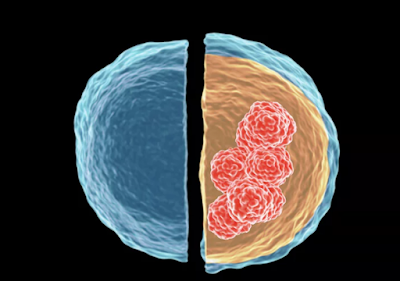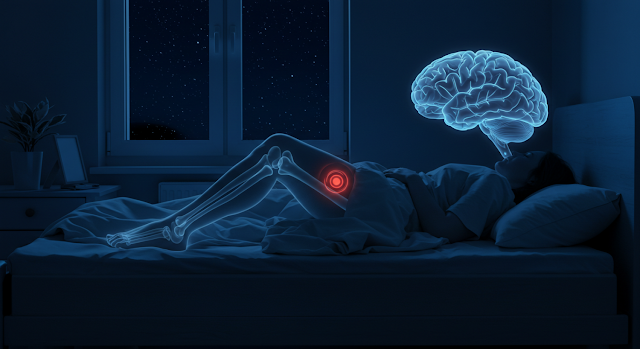It’s a question that haunts so many of us. We all know someone—a friend, a family member, a coworker—who did everything “right.” They never smoked, barely drank, ate their veggies, and stayed active. And then, out of the blue, they got the diagnosis: cancer.
It feels deeply unfair and makes you wonder, “If it can happen to them, what’s the point of even trying to be healthy?” I’ve heard people joke, “My uncle never touched a cigarette in his life and got lung cancer. I might as well enjoy myself!” While it’s usually said with a laugh, the fear underneath is real. How is this possible? And more importantly, what can we *actually* do to protect ourselves?
The truth is, cancer is incredibly complex, but it’s not a complete mystery. To get to the bottom of it, we need to zoom in—way in—to the very building blocks of our bodies: our cells.
Your Body: A Thriving City of 36 Trillion Cells
Picture your body not as a single entity, but as a bustling metropolis made up of trillions of cells. An average adult male has around 36 trillion cells! Each one has a specific job, whether it’s carrying oxygen, fighting off germs, or sending signals to your brain.
This city is constantly under construction. Every single day, your body replaces about 330 billion old or worn-out cells. That’s almost 1% of your total cells, swapped out for new ones every 24 hours. The old saying, “You’re not the same person you were yesterday,” is literally true on a cellular level.
This incredible process of repair and regeneration is managed by a special class of cells called stem cells. Think of them as the master construction workers of your body. They can create new cells for your skin, blood, muscles, and more. When you get a cut, stem cells get to work creating new skin. When you donate blood, stem cells in your bone marrow work overtime to replenish your supply.
Did You Know?
Different parts of your body regenerate at different speeds. The lining of your gut can completely replace itself in just 5-7 days, while your skin gets a full refresh about every four weeks! Your liver is even more amazing; it can regenerate even if up to 90% of it is removed.
When Good Cells Go Bad: What Is Cancer?
This constant process of cell division is usually a perfectly controlled dance. Inside each cell is DNA, the instruction manual that tells it how to behave, when to divide, and when to die. But sometimes, a “typo”—or what scientists call a mutation—can occur in this instruction manual.
Our bodies have an amazing quality control system. Special genes, like the famous p53 gene, act like security guards. They patrol for DNA damage. If a cell has a minor typo, these genes can fix it. If the damage is too severe, they order the cell to self-destruct in a process called apoptosis. It’s a clean, safe way to remove potentially dangerous cells.
Cancer happens when this safety system breaks down.
Imagine a cell gets a mutation in the very genes that are supposed to be the security guards. Now, there’s no one to stop it. The cell ignores the signals to stop dividing. It starts multiplying uncontrollably, creating a mass of abnormal cells called a tumor. These cancer cells don’t do their jobs; they just consume resources and take up space, crowding out healthy cells. If left unchecked, they can break away and travel to other parts of the body, a process called metastasis.
The Double-Edged Sword of Treatment
The most well-known cancer treatment, chemotherapy, uses powerful drugs to kill rapidly dividing cells. Since cancer cells are defined by their rapid, uncontrolled division, chemo is very effective at targeting them.
But here’s the catch: chemo can’t always tell the difference between a cancer cell and a healthy cell that also divides quickly. This is why chemo has such tough side effects:
- Hair Follicles: Our hair is always growing, which means these cells are dividing fast. Chemo attacks them, leading to hair loss.
- Stomach and Intestines: The lining of our digestive tract regenerates every few days. Chemo disrupts this, causing nausea and diarrhea.
- Bone Marrow: This is the factory for our blood cells (red, white, and platelets). When chemo damages bone marrow, it can lead to anemia (low red blood cells), a weakened immune system (low white blood cells), and easy bruising or bleeding (low platelets).
This is why it’s so critical for patients to focus on nutrition, hygiene, and even exercise during treatment—to support their healthy cells as they fight back. When actor Sanjay Dutt was undergoing chemotherapy, his doctor noted he still exercised for an hour every day, a testament to the dedication required to beat this disease.
The Ultimate Reboot: How Stem Cell Donation Saves Lives
After high-dose chemotherapy wipes out a patient’s cancerous cells, it also devastates their healthy bone marrow. To rebuild their blood and immune system, they need a fresh start. This is where a stem cell transplant (also known as a bone marrow transplant) comes in.
Sometimes, a patient’s own healthy stem cells can be collected before chemo and given back to them afterward. But for many patients with blood cancers or blood disorders like Thalassemia, they need cells from a healthy donor.
This brings me to an incredible story about a young boy named Chirag and a kickboxer from Germany named Roman. Chirag was diagnosed with Thalassemia Major, a genetic blood disorder that prevented his body from making healthy red blood cells and put him at a higher risk for cancer. He needed constant blood transfusions just to survive.
His only hope for a cure was a stem cell transplant. But finding a donor isn’t like finding a blood type match. It requires a match of special proteins called Human Leukocyte Antigens (HLA). The odds of finding a perfect HLA match from an unrelated donor can be as low as 1 in 100,000.
This is where organizations like DKMS and Be The Match come in. They run global registries of volunteer donors. One day, Roman, who had registered by simply giving a cheek swab at a blood drive, got a call. He was a perfect match for a little boy in India. He didn’t hesitate. Roman donated his stem cells in a simple, non-surgical procedure similar to donating plasma, and those life-saving cells were flown to Chirag.
Today, Chirag is healthy and cured. He calls Roman his brother and his hero. You have the same power to be a hero. By joining a stem cell registry, you could be the one person in the world who can save someone’s life.
You Can Be Someone’s Cure
Registering as a potential stem cell donor is free, painless, and takes just a few minutes online. They mail you a simple cheek swab kit. If you’re ever called as a match, the decision to donate is still yours. Most donations are done through a process called PBSC, which is as simple as donating blood platelets. You can learn more and register at DKMS or Be The Match.
So, Why Do Healthy People Get Cancer? The Three Main Reasons
Now we can finally answer the big question. Gene damage—the root cause of cancer—happens for three main reasons.
- Inherited Genes (5-10% of cases): Some people are born with a mutated gene passed down from a parent. This doesn’t guarantee they’ll get cancer, but it gives them a head start, significantly increasing their risk from birth. This is entirely out of our control.
- Aging (The Biggest Risk Factor): As we get older, our cells have divided countless times. Each division is another chance for a random typo or mutation to occur. Our body’s repair systems also become less efficient over time. It’s a game of probability. The longer you live, the higher the chances of a critical mutation happening. According to Cancer Research UK, about 90% of cancers are diagnosed in people over 50. This is also out of our control.
- Lifestyle & Environment (The Part You CAN Control): This is the big one. This is where our choices matter immensely. The American Cancer Society estimates that an incredible 42% of cancer cases are preventable. They are linked to lifestyle factors that cause or accelerate gene damage.
Your 5-Point Cancer Prevention Playbook
While we can’t change our genes or stop aging, we have immense power to influence that 42%. Here are the most impactful things you can do, starting today.
| Prevention Strategy | Why It Matters |
|---|---|
| 1. No Smoking, Limit Alcohol | This is non-negotiable. Smoking is linked to 19% of all cancer cases and at least 16 types of cancer. Alcohol is linked to 5.6% of cases and 7 types. Cutting them out is the single biggest preventive step you can take. |
| 2. Maintain a Healthy Weight | Excess body fat doesn’t just sit there; it’s metabolically active and can promote inflammation and hormone imbalances that fuel cancer growth. Excess weight is linked to nearly 8% of cancers. |
| 3. Be Sun Smart | UV radiation from the sun directly damages the DNA in your skin cells, leading to skin cancer. It’s linked to about 5% of cases. Wear sunscreen (SPF 30+), seek shade between 10 am and 4 pm, and cover up. |
| 4. Eat a Whole-Food Diet & Move Your Body | Poor diet and inactivity contribute to about 5% of cancers. Ditch ultra-processed foods, which can contain carcinogenic additives. Load up on colorful fruits, vegetables, whole grains, and lean proteins. Regular exercise boosts your immune system and helps maintain a healthy weight. |
| 5. Get Vaccinated & Limit Exposures | Certain viruses can cause cancer. The HPV vaccine prevents most cervical and several other cancers. The Hepatitis B vaccine helps prevent liver cancer. Also, be aware of environmental carcinogens like asbestos, radon, and air pollution. |
Important Disclaimer
I’m a blogger who is passionate about health, not a medical professional. The information in this article is for educational purposes only and is based on publicly available data from organizations like the American Cancer Society and the World Health Organization. It is not a substitute for professional medical advice. Always consult with a qualified healthcare provider for any health concerns or before making any decisions related to your health or treatment.
Final Thoughts
So, can you do everything “right” and still get cancer? Yes. The randomness of genetic mutations and the simple process of aging mean there will always be a risk we can’t eliminate. But that should never be an excuse for helplessness.
Understanding that nearly half of all cancers are preventable is incredibly empowering. It shifts the focus from fear to action. Your daily choices—the food you eat, how you move your body, whether you protect your skin from the sun—are your most powerful tools in the fight against this disease. You are the architect of your own health, and every healthy choice you make is a vote for a longer, healthier life.
I’d love to hear your thoughts. Have you or someone you know been impacted by this? What preventive steps are you focusing on? Let’s talk in the comments below.





